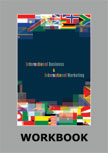Mercosur - Changing Course?
|
|
ICMR HOME | Case Studies Collection
Case Details:
Case Code : BENV002
Case Length : 19 Pages
Period : 1991-2005
Pub Date : 2006
Teaching Note :Not Available
Organization : -
Industry : -
Countries : Latin America
To download Mercosur - Changing Course? case study
(Case Code: BENV002) click on the button below, and select the case from the list of available cases:

OR

Buy With PayPal
|
Price:
For delivery in electronic format: Rs. 400 ;
For delivery through courier (within India): Rs. 400 + Rs. 25 for Shipping & Handling Charges
»
Business Environment Case Studies
» Case Studies Collection
» ICMR Home
»
Business Environment Short Case Studies
» View Detailed Pricing Info
» How To Order This Case
» Business Case Studies
» Case Studies by Area
» Case Studies by Industry
» Case Studies by Company
Please note:
This case study was compiled from published sources, and is intended to be used as a basis for class discussion. It is not intended to illustrate either effective or ineffective handling of a management situation. Nor is it a primary information source.
Chat with us

Please leave your feedback

|
|




<< Previous
"Launching an integration initiative is easier than
sustaining it."1
- Enrique V. Iglesias, President, Inter-American Development
Bank in 2000.2
Introduction
|
On February 1, 2006, Argentina and Brazil, the two dominant members of the
Southern Common Market (Mercosur),3 a
four-nation trade bloc, negotiated a 'Competitive Adjustment Mechanism'
agreement under which industries in either country could demand protection if
they felt they were being harmed by rising imports from the other. The agreement
was the result of a longstanding demand by Argentina which wanted to restrict
certain imports from Brazil, that had hit some sectors of its domestic industry.
Brazil's much larger size, its ability to attract foreign investment and provide
fiscal incentives gave it an edge in reaping the benefits of liberalization and
regionalization vis-à-vis Argentina and the other smaller members of Mercosur -
Uruguay and Paraguay (Refer Exhibit I for map of South America showing Mercosur
members).
|

|
Argentine Economy Minister Felica Miceli called the agreement "a triumph of
cooperation and common work,"and urged further steps to strengthen Mercosur,
but some analysts were critical of these moves to restrict trade and felt it
was not in line with the idea of a Customs Union4
(CU) at all (Refer Exhibit II for stages of economic integration).
|
|
Brazilian
businessmen openly expressed their displeasure at the pact. Humberto
Barbato, Director for Trade at CIESP, a Sao Paulo state industry
association, said, "This is an enormous step backwards. Instead of
increasing free trade it creates more exceptions."5
This was just one in a series of controversies that had rocked Mercosur
in the 2000s. In January 2006, Uruguayan Economy Minister shocked
Mercosur members when he said that Uruguay wanted to negotiate a free
trade deal with the US, its top export market, "as soon as possible."6
Under Mercosur's rules, member countries were not allowed to negotiate
free trade agreements with third parties on an individual country basis. |
Mercosur - Changing Course?
- Next Page>>
|
|









